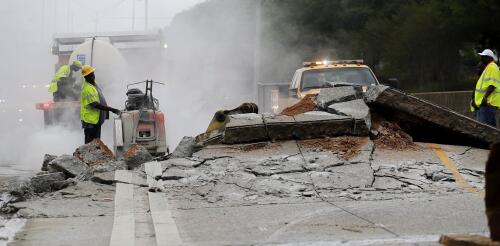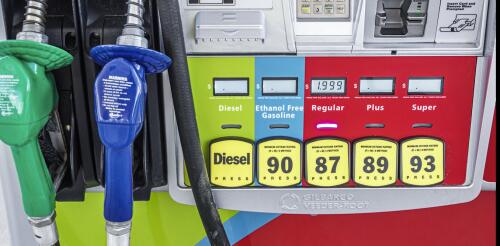Trains
Summer 2024’s record heat is creating problems for transportation infrastructure, from roads to rails. New York’s Third Avenue Bridge, which swings open for ship traffic on the Harlem River, was stuck for hours after its metal expanded in the heat and it couldn’t close. Roads have buckled on hot days in several states, including Washington and Wisconsin. Amtrak warned passengers to prepare for heat-related problems hours before a daylong outage between New York and New Jersey; the risks to power lines and rails during high temperatures are a growing source of delays for the train system. It doesn’t help that the worsening heat is hitting a U.S. infrastructure system that’s already in trouble. The American Society of Civil Engineers gave U.S. infrastructure an overall grade of C- in its latest national Infrastructure Report Card, released in 2021. While there has been some improvement – about 7.5% of U.S. bridges were in poor condition, compar...
The Northeast corridor is America’s busiest rail line. Each day, its trains deliver 800,000 passengers to Boston, New York, Philadelphia, Washington and points in between. The Northeast corridor is also a name for the place those trains serve: the coastal plain stretching from Virginia to Massachusetts, where over 17% of the country’s population lives on less than 2% of its land. Northeasterners ride the corridor and live there too. Like “Rust Belt,” “Deep South,” “Silicon Valley” and “Appalachia,” “Corridor” has become shorthand for what many people think of as the Northeast’s defining features: its brisk pace of life, high median incomes and liberal politics. In 1961, Republican Sen. Barry Goldwater of Arizona wished someone had “sawed off the Eastern Seaboard and let it float out to sea.” In 2016, conservative F.H. Buckley disparaged “lawyers, academics, trust-fund babies and high...
Less than two weeks after train cars filled with hazardous chemicals derailed in Ohio and caught fire, a truck carrying nitric acid crashed on a major highway outside Tucson, Arizona, killing the driver and releasing toxic chemicals into the air. The Arizona hazmat disaster shut down Interstate 10, a major cross-country highway, and forced evacuations in surrounding neighborhoods. But the highway crash didn’t draw national attention the way the train derailment did, or trigger a flood of calls for more trucking regulation like the U.S. is seeing for train regulation. Truck crashes tend to be local and less dramatic than a pile of derailed train cars on fire, even if they’re deadlier. In fact, federal data shows that rail has had far fewer incidents, deaths and damage when moving hazardous materials in the U.S. than trucks. After the train derailment and fire in East Palestine, Ohio, on Feb. 3, 2023, the U.S. EPA tested ove...
Curious Kids is a series for children of all ages. If you have a question you’d like an expert to answer, send it to curiouskidsus@theconversation.com. Why do we use gasoline for small vehicles and diesel fuel for big vehicles? – Methdini, age 15, Sri Lanka Gasoline fuels most light-duty vehicles, such as passenger cars and pickup trucks. Heavy-duty vehicles, like buses, delivery trucks and long-haul tractor-trailers, typically run on diesel. Both fuel types are needed because gasoline and diesel engines have different strengths. As my automotive engineering students learn, this makes them suitable for different uses. Let’s start with what they have in common. Gas and diesel engines both work through a process called internal combustion. First, they mix fuel with air because the fuel needs oxygen from the air to burn. Next, they compress the fuel-air mixture, which ma...



